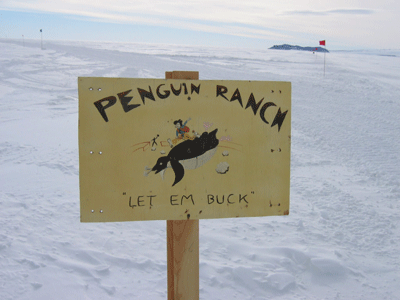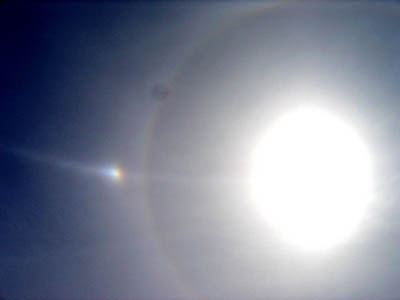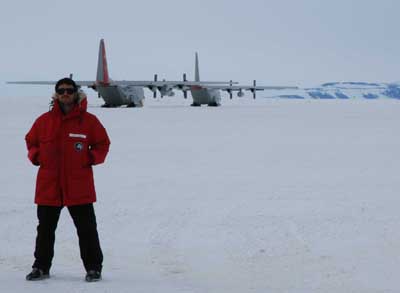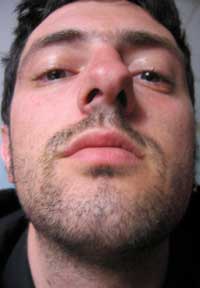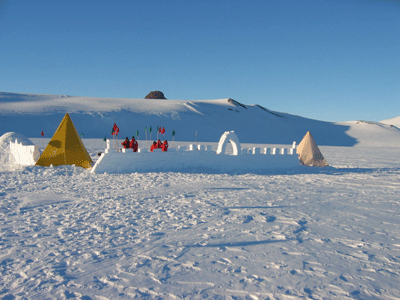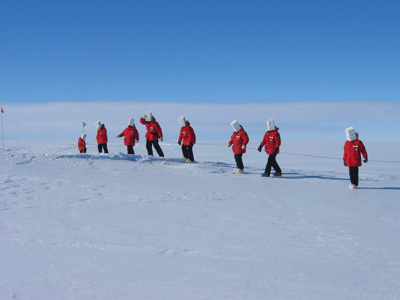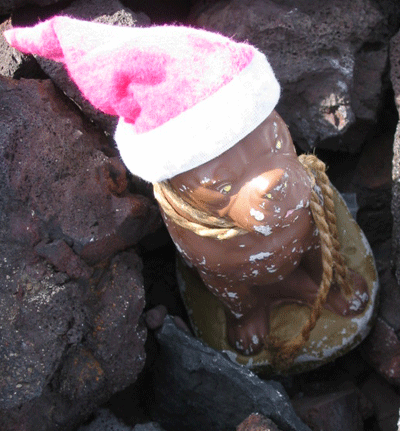I went to the penguin ranch today. And yes, it was awesome. I felt like if
I had an answering machine, I would have used Cooper's message:
"Hi there, this is the Coug. I'm out doing awesome stuff, so leave a
message, and I'll call you back. If you're cool enough"
Or some such thing.
Here's an explanation of the penguin ranch. I got a couple of things
wrong from before. It's a field camp made up of four or five huts
out on the sea ice about 20 or so miles away from McMurdo. In choosing
the location for the camp, they try to find a place as far away from any
natural ice cracks or openings as they can. This is so the penguins don't
just swim away when they bring them in. Then they go out to the ice
edge about 60 or 70 miles away, grab some penguins, and airlift them
back to the chosen spot. In said spot, they've constructed a little
corral and drilled two big holes in the ice. Outside the corral, another
hole has been drilled and the "ob tube" installed. The ob tube is a
fiberglass tube with a clear bubble on the end. The whole thing is about
15 feet long or so (the ice is nine feet thick). You climb down a
claustrophobic ladder and emerge into a serene otherworldy weirdness. There's
an incredible ambient blueish greenish glow that pervades the universe
on all sides. The bottom of the ice is made of complex, beautiful fractal
structures. The light fades slowly to black as you look down. I was told that
the water depth there was 1242 feet.
The tube is used to observe penguins diving and surfacing through the holes
provided in the corral. I was mistaken however in thinking that that was
the purpose for the camp. The scientists there implant monitoring devices
in the birds that record the levels of oxygen and nitrogen in their blood,
specifically while diving. They've found some amazing stuff. You'd think
that diving animals have incredible lung capaicty. That's not exactly true,
they just have incredibly high oxygen retention in both their blood and
muscles. Also, they've recorded heartbeats as slow as 3 per minute when
the birds are on extended dives.
At any rate, our purpose in going there was to build a new snow fence around
the edge of camp. They tend to get very drifted in when the wind blows up
and they were worried about the corral. When we got there, there were four
Adelie penguins hanging out outside the corral. Adelies are smaller than
emperors, and they're solid black and white (no color on the breast).
These birds had apparently shown up the night before (walked in from who knows where). We watched and
photoed them, and walked over to the corral where the emperors were. As
we were walking up, one person noticed four emperors approaching from across
the sea ice. These were penguins who hadn't been flown in, they had just walked.
The ice edge was, as I said, about 60 or 70 miles away.
Then, folks, we got to wrangle penguins. We fanned out in a semicircle around
the approaching emperors, spread our arms, and slowly hearded them into
the corral. A couple of times, they would drop to their bellies and try to
escape, but the scientists were not above pouncing and wrestling them back
into line. As these new birds were approaching, all of the ones in the corral
had moved to their side of the fencing. They started talking to the newcomers.
There's no other way to describe it. Also at this point, the adelies came up
and joined the conversation, before running away. Runing adelies is probably
one of the most heartbreakingly adorable sights I've ever seen. It very
much seemed as if the penguins in the corral were saying "run away"
to the newcomers. It was fascinating.
After all that, we got to work building the fences. A dozer had come by
earlier and plowed up a berm around the camp. We drilled holes in this
with a couple of ice augers and planted bamboo and two-by-fours. Across
this we ran fencing material, attached with zip ties. The whole fence
building job only took about two hours, so we got to spend the rest of
the day hanging out with the penguins. A better day off I could not have
asked for, and it was a work day. There were only six of us on the trip,
so I feel very fortunate to have been selected to go.
penguin ranch photos
